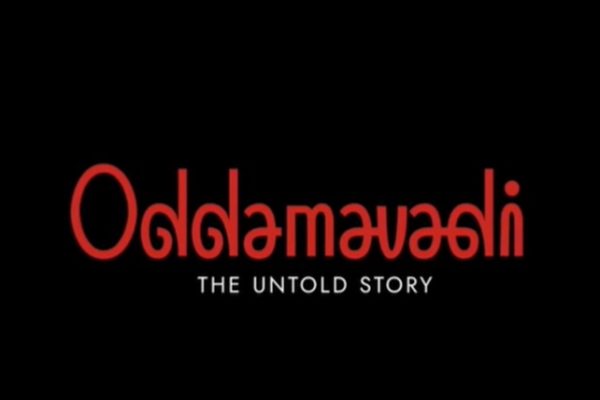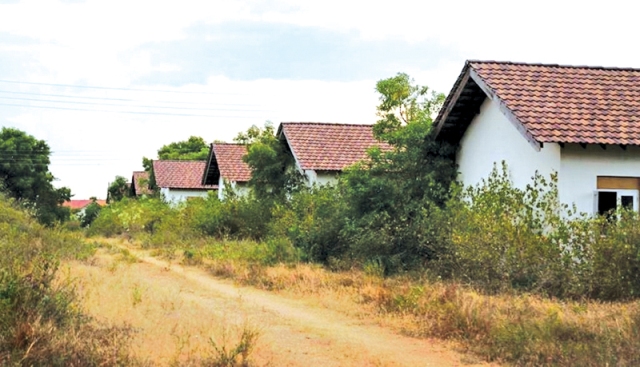The Dambulla mosque fracas engineered by the militant elements of Sri Lankan Buddhists, the reaction to it by local Muslim politicians and Muslim religious leaders, the former threatening to withdraw their inconsequential support to the government while the latter urging Muslim masses to pray to Allah to restore the status quo, and the conflicting messages from the nation’s prime minister and the president, both of them without condemning the perpetrators but trying to mollify the aggressor and the aggrieved, demonstrate yet again the toxic mix of militant Buddhism (perhaps a contradiction in terms) and national politics. The Muslim community is precariously placed between militant Buddhism and political ineptitude.
The Sinhala-Buddhist identity of Sri Lanka is rooted in history. From the ancient times Buddhism always played a deterministic role in the island’s state formation. However, the 52 South Indian invasions in 14 centuries (2nd Century B.C. to 14th Century A.D.) according to one source, and nearly 450 years of uninterrupted Western Christian colonial rule (1505 to 1948) had obviously injected a feeling of political and cultural victimization in the Buddhist mindset. It was this feeling of victimization that led to the Buddhist revivalist movement in the country during the last quarter of the 19th Century and in that movement there was also an element of militancy. The Muslim community was the first to suffer in the hands of a militant Buddhist mob in 1915.
After independence however, practically every government that ruled Sri Lanka exploited this militant element whenever it felt threatened by the swelling of public discontent against government policies. The final victory in the 26 year old civil war, of a predominantly Sinhala-military-naval-police-power over an uncompromising Tamil enemy was celebrated with triumphalism and schadenfreude by the same militant elements and they became even more assertive in their demand for the total subjugation of the minorities. Instead of showing compassion and magnanimity towards the vanquished, as demonstrated by the Bhuddist monarchs in the ancient past, their modern avatars, by pandering to the whims of militant-Bhuddism, have become unyielding even to the minimum demands of the Tamil minority. As the former President Chandrika Kumaratunga said in a recent speech in Paris, “Anti terrorist emotions have been successfully linked with anti-Tamil and now anti-foreign and anti-everybody else concept, by means of a massive State-led publicity campaign.”
Precariously poised
Muslims and Muslim politics in Sri Lanka, both increasingly obsessed with the idea of preserving and promoting an ethno-religious identity at the expense of creating a Sri Lankan Muslim national identity are now precariously poised to confront a triumphalist and militant Buddhism. The Dambulla incident was the latest of a series that happened over the last few decades. As noted earlier it was in 1915 during the British colonial regime that the Muslim community experienced its first taste of militant Buddhism when an unruly urban mob of Buddhist thugs in Colombo and its suburbs rampaged and destroyed Muslim property and life. They were driven into action by the anti-Muslim rhetoric of Buddhist firebrands like Anagarika Dharmapala, who described the “Mohamedans” as “aliens” and demanded that they be repatriated to Arabia. The immediate provocation for the riots came of course from an equally intolerant group of Muslim fanatics in Gampola by refusing to allow a Buddhist procession with music to pass along the site of a mosque.
After that incident and under an independent Sri Lanka, Muslim politics adopted a different strategy to survive. With ethnic politics driving a wedge between the Sinhalese and Tamil communities, Muslim leaders resorted to a businesslike strategy of aligning with the ruling party and distanced themselves from the Tamils. “Keep them divided we will swim, and allow them to unite – we will sink” was the very words of a former Muslim minister. Although this strategy won the community some concessions from the rulers, especially in the fields of education and culture, Muslim peasants and farmers in the Eastern Province and elsewhere were losing their traditional lands like the Tamils, all in the name of national economic development. Muslim politicians of that time who were mostly based in the heart of Colombo did not even dare to raise their voice against these losses in the periphery. It is sad that this aspect of Sinhalizatiion escaped even the attention of The Social Architects who recently published in the International Policy Digest of March 2012 an otherwise excellent monograph titled, Salt on Old Wounds: The Systematic Sinhalization of Sri Lanka’s North, East and Hill Country.
That Muslim political strategy of fishing in troubled waters, sometime more respectfully called politics of pragmatism, completely lost its vitality with the conclusion of the civil war. In a triumphalist and populist government virtually ruled by the dictates of a cabal surrounding the president, even the Sri Lanka Muslim Congress, one component of the ruling coalition and a political party originally formed with the intention of playing the same old ethnic game but under a new and united team, has ended up disunited and dysfunctional descending into a bunch of cheer-leaders. On the other hand, militant Buddhism with support from elements in the military and police forces have become indispensable to a government whose geo-political manoeuvres and domestic economic policies are driving the country to a dead end. This explains why the government is dilly dallying with the Dambulla issue.
Are the Muslims also contributing to the rise of militancy among the Buddhists? In this context, attention should be drawn to another variable that has the potential to make the situation even more volatile, and that is Islamism. Islamism is a religiously expressed protest movement that normally thrives under oppressive conditions but varies in its structure and operation depending on local conditions. It can be active or passive, peaceful or violent, moderate or extreme. It is not a monolithic creature as portrayed by the West. Yet, the common denominator to all forms of Islamist protest is that it is expressed through Islam.
Self-alienating
Although Islamism has not yet taken a definite political shape in Sri Lanka, yet, decades of evangelical work by the Tabligh Jamaat to ‘Islamise’ the Muslims and the infusion of Salafist or Wahhabi ideas after the 1970s through Middle East contacts have unfortunately created a situation in which a growing section of the Muslim community is self-alienating from main stream Sri Lanka. Muslims are fast losing their national identity without realising it. This self-alienation is demonstrated through the life and actions of community members and their leaders. The attire of Muslim men and women who have embraced the teachings of the Jamaat and Salafism for example is foreign to the country in which they live and so are the names and architecture of some of their institutions and building structures. The manner in which some Islamic religious practices are observed, quite contrary to the teachings of the original sources, disregard the sensitivities of other communities. Similarly, what is the national relevance of planting expensive date palms that are native to the Middle East along the roadsides of Muslim towns in Sri Lanka? Why is the attempt to write street names in Arabic? Why should Muslim schools have a religiously determined school calendar separate from other national schools? These issues, some of them may sound trivial, are obviously isolating the Muslim community. It is this tendency to shape local Muslim life through a Middle East design that is totally alien to Sri Lanka that is providing substance to the various anti-Muslim demands of militant Buddhism. Muslim politicians are absolutely incompetent to tackle these issues.
Muslims, like the Tamils have genuine economic, social and cultural grievances against the ruling regime. Government take-over of traditional farm lands, unemployment, administrative discrimination, underfunded and substandard educational institutions, discriminatory behaviour of the security forces, and above all a militant Buddhist challenge are common to all minorities in the countries. These have to be fought not by each community in isolation but by all, and more importantly in union, with the progressive forces among the Sinhalese community itself. Not all Buddhists are militant and not all Sinhalese are anti-Muslim and anti-others. One should not forget that in the 1950s and 1960s it was the progressive Sinhalese who cried for parity of status for the Tamil language and equality for all citizens. Their leaders were above any ethnicity or religion. Unfortunately they were not supported by the minorities. Unless the Muslims and Tamils learn the lessons from history a proper solution to their grievances will remain a distant dream. Neither India nor the Middle East, or for that matter not even a super power is going to come to their aid.
Source : http://www.lakbimanews.lk
Post Disclaimer | Support Us
Support Us
The sailanmuslim.com web site entirely supported by individual donors and well wishers. If you regularly visit this site and wish to show your appreciation, or if you wish to see further development of sailanmuslim.com, please donate us
IMPORTANT : All content hosted on sailanmuslim.com is solely for non-commercial purposes and with the permission of original copyright holders. Any other use of the hosted content, such as for financial gain, requires express approval from the copyright owners.
 Sri lanka Muslims Web Portal Sri Lanka Muslims News Center
Sri lanka Muslims Web Portal Sri Lanka Muslims News Center

 Donate
Donate


